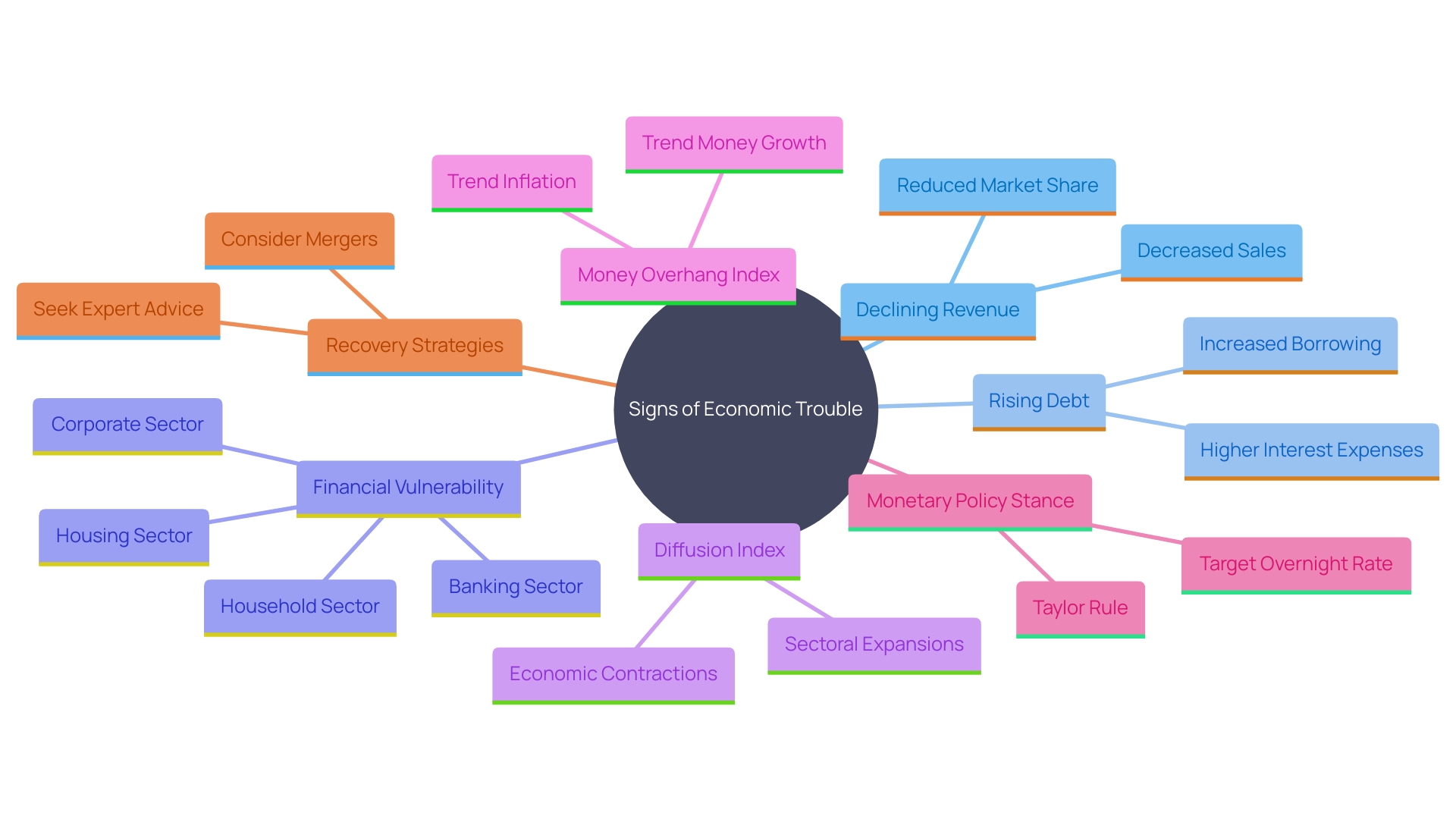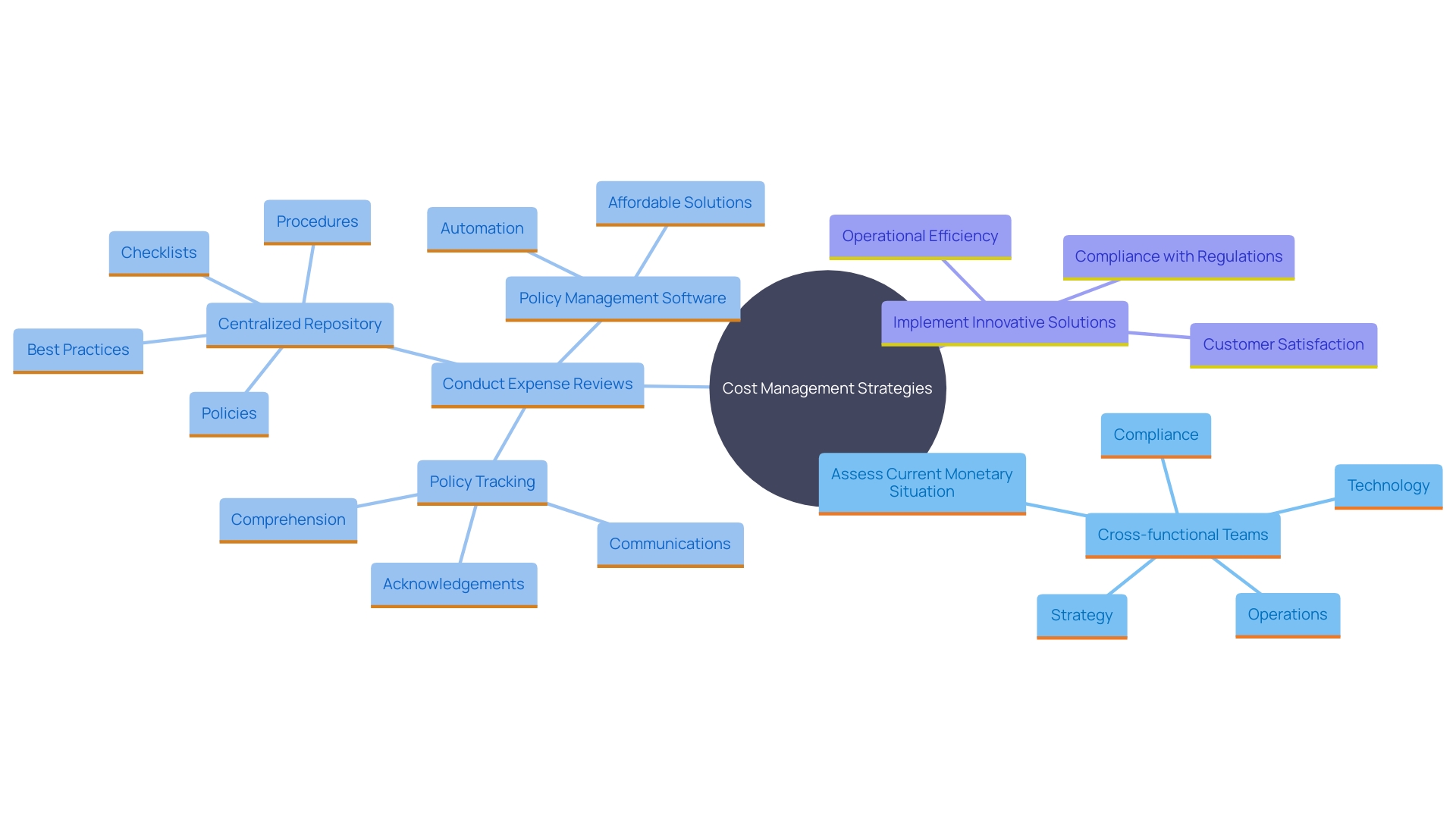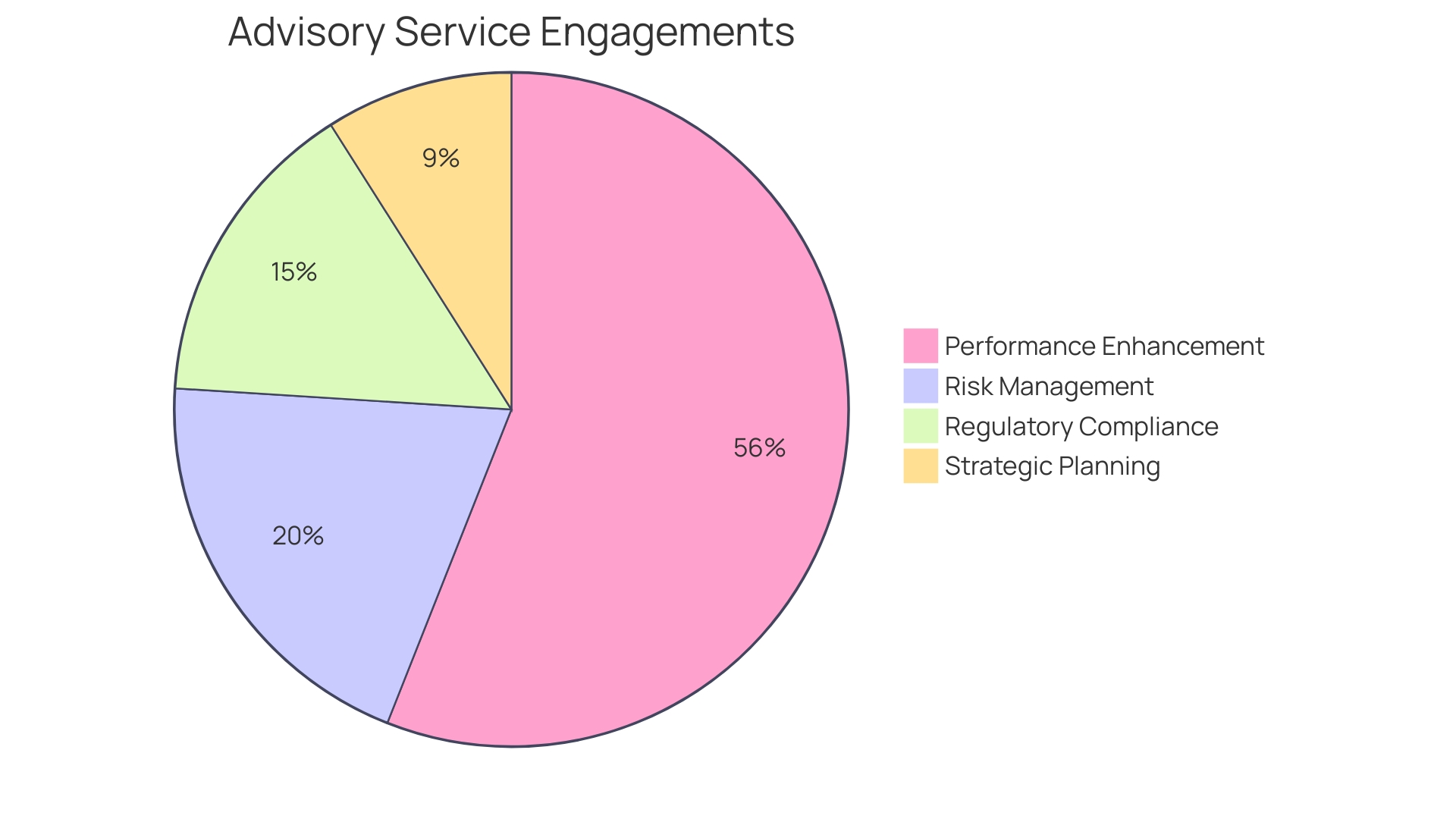Introduction
Recognizing the early signs of financial distress is crucial for the survival and growth of any business. Declining revenues, increasing debt, and cash flow shortages are just a few indicators that demand immediate attention. Effective financial planning, strategic cost management, robust cash flow techniques, and adept debt restructuring can provide the necessary lifelines for businesses facing financial turmoil.
By leveraging expert advisory services and implementing comprehensive risk management strategies, businesses can navigate through challenging times, ensuring long-term stability and resilience. This article delves into practical solutions and actionable advice to help CFOs and business leaders identify, address, and overcome financial distress, fostering a path to recovery and sustainable growth.
Identifying Signs of Financial Distress
Recognizing early signs of economic trouble is crucial for any enterprise. Key signs include declining revenue, rising debt levels, cash flow shortages, and missed monetary obligations. 'For instance, the 2022 Small Enterprise Credit Survey revealed that 42% of firms with staff took on repayable funds to address monetary challenges, underscoring the critical need for careful fiscal planning to avoid a debt cycle.'. Operational inefficiencies and liquidity issues also signal trouble. As James Mohs, associate professor at Pompea College of Business, advises, knowing when to seek expert help, such as consulting a bankruptcy attorney, is crucial. Observing these symptoms allows organizations to act promptly, averting further decline and investigating feasible recovery alternatives such as refinancing or mergers.

Strategic Financial Planning
Effective budgeting is paramount for businesses grappling with economic distress. Start by thoroughly reassessing all expenditures and prioritizing accordingly. This process should not involve immediate cost-cutting but a detailed examination of both expenses and income streams, aligning them with future goals. For instance, if a company encounters a significant revenue decline, a thorough review of accounting statements such as the balance sheet, income statement, and cash flow statement can identify underperforming products, guiding decisions to either discontinue them or enhance their sales.
Strategic monetary planning is an ongoing process, necessitating regular reviews and adjustments. As economic conditions vary and new challenges emerge, organizations must adjust their monetary strategies. This includes updating economic projections to ensure they reflect the current market situation and future uncertainties. Highlighting flexibility enables organizations to stay agile, facilitating informed choices in reaction to economic changes, such as increasing interest rates or inflation.
Moreover, creating a strategic budget tailored to a distressed company's needs is essential. This involves setting clear monetary goals and building a safety net to navigate complexities. By maximizing tax-efficient savings and seeking professional advice, businesses can secure long-term economic stability. Consistently revising the budget plan in response to life events, tax law changes, and economic shifts ensures that the strategy stays pertinent and effective.
In summary, effective resource planning in times of distress involves a meticulous reassessment of assets, continuous adaptation to changing circumstances, and strategic budgeting. This comprehensive approach not only addresses immediate needs but also lays the groundwork for future stability, ensuring businesses can respond to unexpected challenges and thrive.
Cost Management Strategies
'Implementing robust cost management strategies can significantly alleviate monetary pressures.'. 'Businesses should start by thoroughly assessing their current monetary situation, including detailed reviews of all fiscal statements.'. This helps pinpoint areas requiring immediate attention and identify underperforming segments that may need discontinuation or revitalization.
Conducting thorough expense reviews to identify potential cuts or optimizations is essential. This might encompass renegotiating supplier contracts, reducing overhead, and streamlining operations. The goal is to focus on essential expenditures to preserve cash flow and enhance financial resilience.
Effective cost-cutting measures should also consider their impact on operational efficiency and customer satisfaction. 'These approaches should not elevate risk exposure or result in non-compliance with legal and regulatory standards.'. Incorporating innovative solutions or technology can reduce costs without compromising quality of operations. Additionally, eco-friendly cost-cutting measures can lead to savings and align with social responsibility goals.
By applying these criteria, companies can ensure that their cost-cutting strategies are not only effective in reducing expenses but also supportive of their overall goals and values. This holistic approach promotes long-term economic stability and resilience.

Cash Flow Management Techniques
Effective cash flow management is the lifeblood of any enterprise, particularly during challenging times. By leveraging modern techniques and tools, organizations can better sustain operations and maintain financial stability. Automating invoicing processes and tightening credit terms can significantly reduce delays in payments, which is a common issue faced by 30% of small and medium-sized enterprises (SMEs). Moreover, precise cash flow forecasting is essential; 18% of organizations struggle with this, often due to a dependence on manual processes such as spreadsheets and paper records.
Establishing a robust cash reserve is another essential strategy. This not only offers a buffer against unexpected shortfalls but also enhances an organization's ability to seize unforeseen investment opportunities. Consistently evaluating cash flow forecasts enables organizations to foresee and alleviate possible liquidity challenges, guaranteeing long-term solvency.
Investing in new software solutions can address many of these challenges. For example, 32% of companies have discovered that such investments enhance productivity, while 30% gain from improved data management and analysis. As highlighted in recent studies, the move towards automated and efficient money management tools is becoming increasingly necessary for maintaining healthy cash flow and ensuring organizational resilience.

Debt Management and Restructuring Options
Addressing debt challenges is crucial for troubled enterprises, particularly following unexpected occurrences such as the 2008 economic downturn or the COVID-19 outbreak, which reveal weaknesses in insolvency frameworks. Options for addressing debt include negotiating with creditors for more favorable terms, consolidating debts, or exploring refinancing opportunities. For instance, implementing out-of-court workouts (OCWs) can provide an efficient alternative to traditional judicial insolvency procedures. OCWs provide a flexible approach to negotiate rescue plans, thereby preventing the liquidation of viable companies and ensuring higher creditor repayment rates. Grasping these mechanisms is crucial for making informed choices, as they can significantly alleviate immediate economic pressures and allow businesses to stabilize operations and concentrate on recovery. As noted by experts from the World Bank's B-Ready flagship report, such mechanisms encourage greater entrepreneurial activity, a critical component of private sector development.
Engaging Expert Advisory Services
Utilizing outside advisory services can be a game-changer during monetary distress, offering fresh perspectives and specialized expertise. For instance, Nets, a digital payment solutions provider, successfully navigated its monetary challenges by leveraging advisory services. Advisors can meticulously assess economic situations and craft tailored turnaround strategies, guiding the implementation of necessary changes. Their extensive experience across varied sectors enables them to provide actionable recommendations, significantly enhancing the recovery process. According to a recent report, performance enhancement is the most common type of engagement, with a notable 56% increase since 2020. More than half of clients indicate improved efficiency and lowered expenses, demonstrating the concrete advantages of external advisory services in attaining economic stability and growth.

Risk Management Strategies
Establishing strong measures for protecting a company's financial well-being is essential. This process begins with a comprehensive threat evaluation and business impact analysis, taking into account the organization's objectives and the potential impacts on people, facilities, legal obligations, finances, reputation, the community, and the environment. Personnel from various departments, including human resources, legal, IT, and finance, should collaborate on developing a mitigation plan.
A well-structured Business Continuity Management (BCM) program is essential, especially for handling disruptive events such as natural disasters, terrorist attacks, and public health emergencies. This program should outline the maximum allowable time for recovery and establish clear communication channels for employees, stakeholders, and the media. Regular monitoring, reviewing, and testing of the BCM plan are vital to ensure its effectiveness and to make necessary improvements.
The Global Risks Report, created by the World Economic Forum in partnership with Marsh McLennan, offers valuable insights and strategies for comprehending and handling major threats. It emphasizes the significance of a company-wide method for assessing emerging challenges and developing optimal financing programs. For example, the swift embrace of AI technology and the changing dangers of climate change and geopolitical instability necessitate dynamic decision support and comprehensive management of uncertainties.
By prioritizing hazard management, companies can navigate uncertainties more effectively, ensuring they are prepared for disruptions and can respond swiftly to unexpected challenges. This proactive approach not only protects financial stability but also enhances the organization’s resilience in the face of various risks.
Conclusion
Recognizing and addressing financial distress is vital for any business aiming to ensure its survival and growth. Early identification of indicators such as declining revenues, rising debt, and cash flow shortages empowers leaders to take decisive action. The importance of strategic financial planning cannot be overstated; it involves a thorough reassessment of expenses, income streams, and the creation of a tailored budget.
This proactive approach enables businesses to adapt to changing economic conditions and lays the groundwork for long-term stability.
Effective cost management strategies further bolster financial resilience. By conducting detailed reviews of financial statements and assessing operational efficiencies, businesses can identify areas for optimization. Implementing innovative solutions and eco-friendly practices not only reduces costs but also aligns with broader organizational goals.
In parallel, robust cash flow management techniques such as automating invoicing and establishing cash reserves are essential for maintaining liquidity and seizing growth opportunities.
Debt management and restructuring options provide a pathway for distressed businesses to stabilize operations. Engaging external advisory services can bring in specialized expertise, offering tailored turnaround strategies that enhance recovery efforts. Additionally, implementing comprehensive risk management strategies prepares organizations to navigate uncertainties, safeguarding their financial health against potential disruptions.
In summary, a multifaceted approach encompassing financial planning, cost management, cash flow techniques, debt restructuring, and risk management equips businesses to tackle financial challenges head-on. By taking decisive action and leveraging expert insights, organizations can not only overcome current difficulties but also foster a resilient foundation for sustainable growth in the future.




